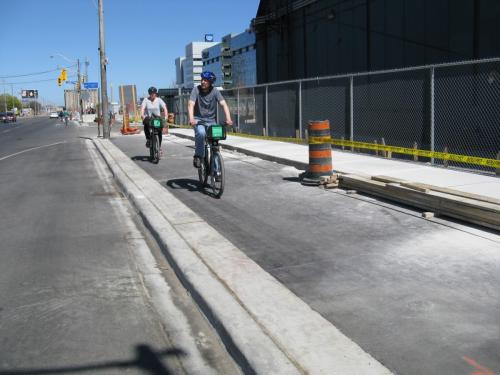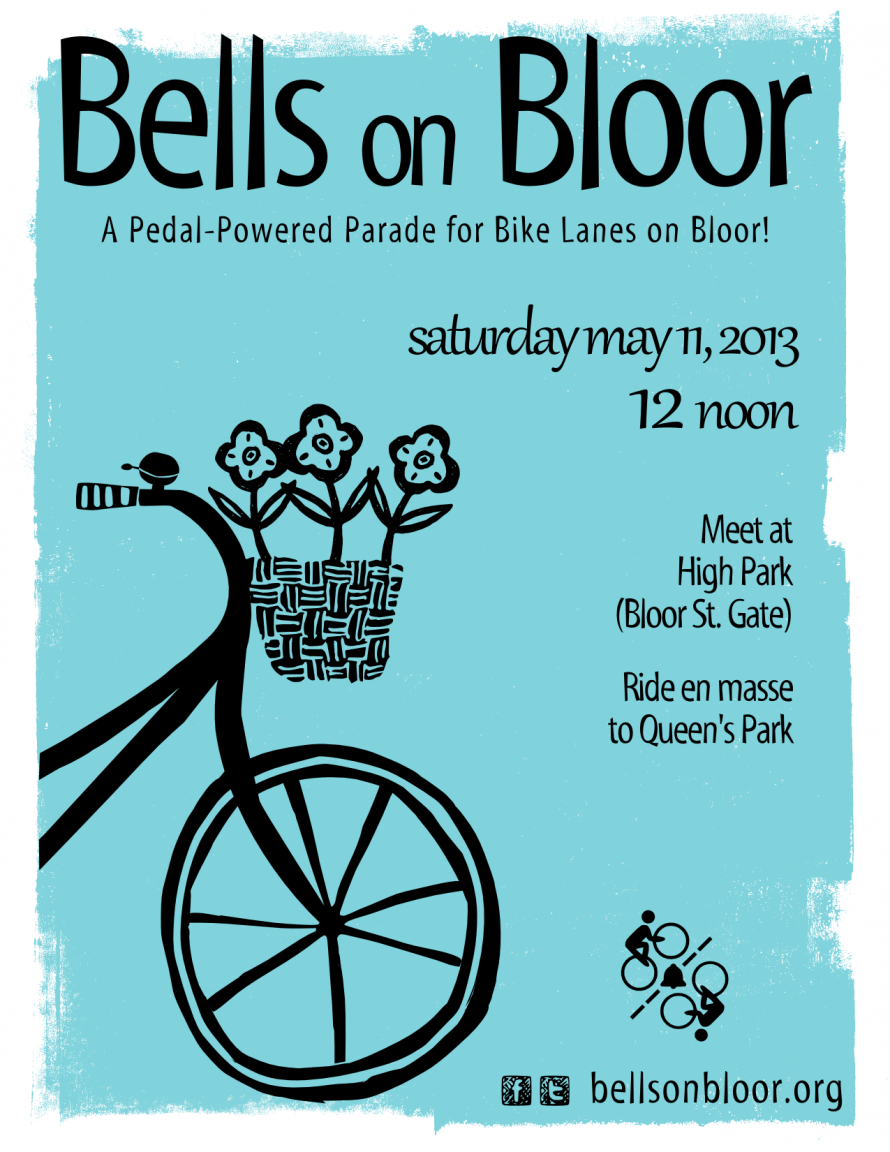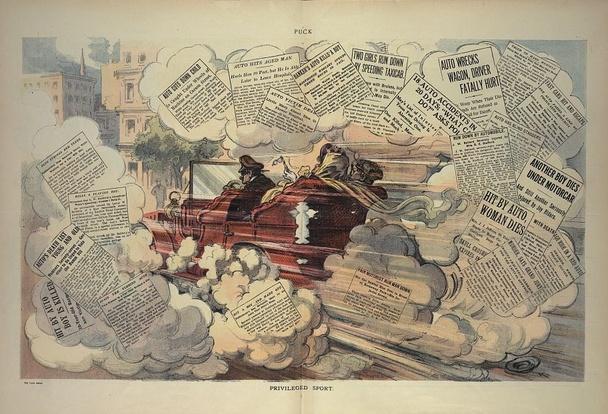Queens Quay is undergoing a lot of street construction but the result should be beautiful. Even with the upheaval, construction, noise, and traffic people are still coming to enjoy themselves. As did I this last weekend when I joined in on a Jane's Walk hosted by some staff from Waterfront Toronto. On their Queens Quay walk they explained the undergoing work on the street and how it will be transformed into a much nicer boulevard, closer to Barcelona's waterfront promenade than it's current car-choked frustration.
For people on bikes, the Martin Goodman Trail (MGT) will be much improved with a fully separated bike path and a walking path to take over the southern two lanes of car traffic. That cyclists are treated so well may be due in no small part to the fact that the firm that won the design bid, West 8, is based in the Netherlands.
I was disappointed, however, to find out that the eastern end of Queens Quay - east of Jarvis - will have to wait until the government commits to funding a streetcar extension to Parliament and eventually the Portlands. Christopher Glaisek, VP Planning and Design of Waterfront Toronto, and one of the speakers on the walk explained that they are avoiding having to do the work twice. The streetcar extension price has climbed up to $370 million (something about maintaining access to the Hyatt so the streetcar has to be underground for a longer stretch).
In the meantime Waterfront Toronto got a bit of extra funding to extend the sidewalk and create interim cycle tracks from Yonge to Jarvis which should be open by June. I think this might be the second official cycle track built in Toronto!

East of Jarvis the cycle tracks end and eastbound cyclists are directed back onto the roadway. They travel in some freshly paved bike lanes until they merge again with the Martin Goodman Trail at Parliament. Going westbound by bike is a bit trickier. At Parliament they will be asking cyclists to cross at the lights and then take the bike lane along the road until they get to the Jarvis crosswalk where they will then again merge into the cycle tracks. Currently there is no indication that cyclists should do this so most people are choosing the obvious direct route, an asphalt "sidewalk" that replaced the MGT that was previously longer.
[img_assist|nid=4659|title=|desc=|link=node|align=center|width=500|height=375]
They kindly put some "No bicycles. Pedestrians only" stencils but from what I saw many people either ignored or didn't notice them. Another problem with this sidewalk, as Jelle Therry, Design Manager for Queens Quay, West 8+DTAH, pointed out to me, is that the sidewalk speaks a double language: the sign may say no bicycles but the asphalt says "Bike here!"
[img_assist|nid=4660|title=|desc=|link=node|align=center|width=500|height=298]
So why did they stop the cycle tracks at Jarvis?
According to Chris, they stopped at Jarvis because it would have required lights at the intersections, which would have required re-installation when the street is rebuilt for the streetcars. At least that's what I think he said. It doesn't make any sense to me. They didn't install lights for the cycle track from Yonge to Jarvis. And didn't the old Martin Goodman Trail that this sidewalk replaced take the exact same route? All the intersections are glorified driveways so I can't imagine that temporary cycle tracks couldn't have been worked out.
While the stretch of Queens Quay from Lower Spadina to Jarvis is going to be awesome, the rest of QQ leaves me frustrated. Why didn't they just leave the MGT where it was and connect it to the new cycle tracks at Jarvis? And why are they leaving the section from Spadina to Bathurst as is where cyclists will be forced to cross the street yet again?
Bypassing the Construction
Making things nicer unfortunately means some necessary headache but they City has been trying to ease things for everyone. There's a marked bypass route for cyclists so that they can avoid the construction mess. Interestingly the detour follows a forgotten section of the MGT - you can still see the distinctive blue/green markings. I believe that it fell into disuse when condos encroached on it years ago. It may also have been too far out of the way, when most people would have preferred Queens Quay's much nicer scenery.
[img_assist|nid=4661|title=|desc=|link=node|align=center|width=500|height=375]
Detour signage is an issue. I had a hard time finding the signage for the detour when I was travelling back from the Jane's Walk. It was only by testing a couple side streets that I found the detour and I was actively looking for it. Most people won't even know it exists. I backtracked and saw a small detour sign that was easily missed. The signage on the west side of the construction wasn't much more visible and I saw a number of people just biking onto the sidewalk since it was the obvious choice.
[img_assist|nid=4662|title=|desc=|link=node|align=center|width=500|height=375]
Most people seemed to be more than happy to bike at a walking pace down the sidewalk.
[img_assist|nid=4663|title=|desc=|link=node|align=center|width=500|height=375]
The new Queens Quay will be a big improvement for cycling but there are still some glaring issues. Putting in better signage for the detour seems to be an easy fix, though making the east end work better for cycling will take more work and perhaps a different mindset by Transportation Services that seems to ignore human behaviour by trying to get people to cross a wide road twice over a short distance. And I didn't hear anybody talk about any plans for west of Lower Spadina. It's going to be good but could have been done better.



